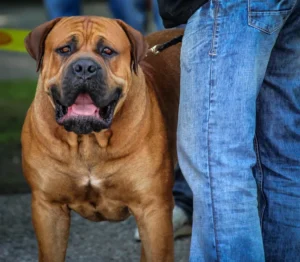
Herd or pasture bullies can wreak havoc among their fellow horses by biting, striking, kicking, running them into obstacles and through fences, as well as hindering submissive horses from getting access to food (hay). Furthermore, bullies may shred turnout blankets by biting at those wearing them and shredding turnout blankets with bite marks as a form of aggression towards submissive ones.
Herd bullies may act alone, or with one or more accomplices to terrorize the rest of the herd. Bullies may be mares or geldings of any breed or age. Their behavior is difficult to manage since you’re powerless over what happens in the pasture when no one’s there.
Horses in herds tend to form hierarchies within themselves; one horse often takes on the leadership role, with others following in his or her wake and sometimes becoming submissive after being subject to abuse from another member. Unfortunately, little can be done to change this pecking order.
When You Are in the Pasture
One key element you must establish when in the pasture is making sure all horses understand that when you are present, they should respect you and you alone decide when social time ends and interactions cease. When socializing alone, all horses must know it’s your choice when that time ends; no horse should present its heels to you or lay its ears back when socializing is complete.
When horses act disrespectfully in the pasture, smacking or sharp words may be appropriate as punishment. If this behavior continues, carrying a whip may also help keep the animal away while providing quick punishment in form of flicking may also be suitable.
Punishing horses for their actions against other horses in their pasture may not work effectively and you may not always be there enough to enforce it consistently. Jostling for herd dominance and position within its hierarchy is natural behavior for horses.
Protecting Other Horses
There’s only so much you can do to safeguard other horses from pasture bullies, but when their behavior becomes injurious to others you may have no other choice but to separate the bully by building an extra paddock or fencing off part of a field with electric wires if needed; alternatively you could try rotating herd members so that more dominant but confident horses pasture alongside it to help reign them in.
Assure that your paddocks aren’t overcrowded and your horses have enough food. Make sure they aren’t bored and wandering aimlessly looking for something interesting to do; regular exercise may help release energy built up within their muscles.
Food battles often erupt over who gets what. If this is the case for you, try providing extra food so when a bully chases someone from theirs there will still be an extra pile to feast upon. Space these food piles or buckets far apart so a bully has farther to run while giving victims more time to get away.
Depending on the nature of your horse, bitter no-chew spray might help deter bullies from shredding turn out blankets. Always make sure your blankets are checked frequently; badly torn blankets could pose a potential hazard if they entangle or trap the horse inside it.
If a bully or group of bullies is only targeting one horse, it may be wise to keep him apart from his pursuers. Bullies can sometimes pick on just one animal until they lose weight and suffer injuries that require treatments from vets. Shod bullies increase the chances of serious harm being done to other horses as well. It is especially important not to place young, small or elderly horses with pasture bullies that might not be able to escape quickly enough.





